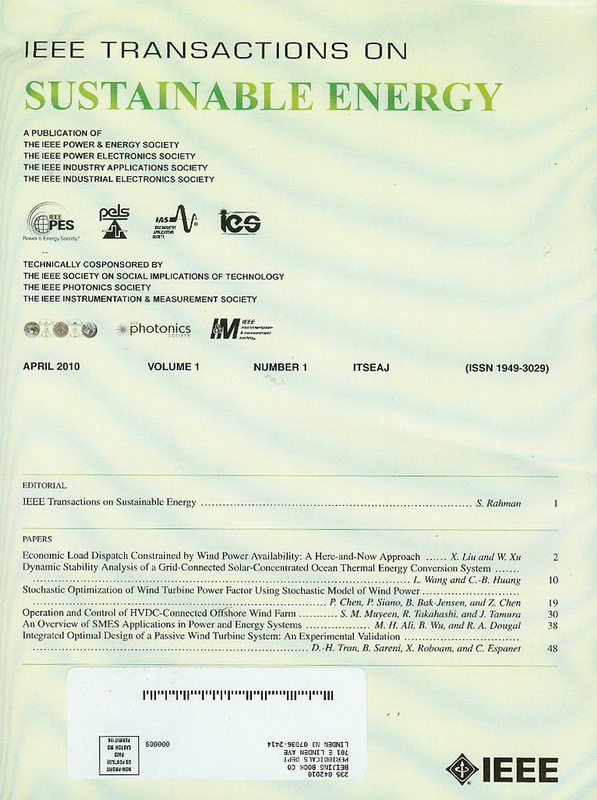提高储能系统二次调频性能的分层协调控制策略
IF 10
1区 工程技术
Q1 ENERGY & FUELS
引用次数: 0
摘要
本文提出了一种分层协调控制策略,旨在提高储能系统在二次调频(SFR)中的整体性能。该策略包括三层:系统层、ESS操作层和协调控制层。在系统层,建立了多区域互联系统的详细频率响应模型。通过对功率分配因子的敏感性分析,揭示了ESS和常规发电机组(CGU)在SFR中的时序、深度和影响的内在机制。在此基础上,提出了一种基于灵敏度的ESS和CGU自适应功率分配策略,在降低ESS功率和保持荷电状态(SOC)的同时,提高了SFR效果。在ESS操作层,将ESS分为两个组件进行集成,采用单调充放电策略,减少频繁充放电带来的寿命退化,从而提高运行效率。在协调控制层,考虑功率预测和ESS运行状态,提出了一种基于双输入模糊控制的SOC优化策略。进一步基于模糊规则动态修正功率分配因子,优化SOC水平,保证ESS在各种条件下的双向SFR能力。案例研究在不同场景下验证了所提出策略的整体SFR性能。本文章由计算机程序翻译,如有差异,请以英文原文为准。
Hierarchical Coordinated Control Strategy for Enhanced Performance of Energy Storage System in Secondary Frequency Regulation
This paper presents a hierarchical coordinated con-trol strategy designed to enhance the overall performance of the energy storage system (ESS) in secondary frequency regulation (SFR). The strategy includes three layers: the system layer, the ESS operation layer, and the coordination control layer. In the system layer, a detailed frequency response model of the multi-area interconnected system is developed. The intrinsic mech-anisms of timing, depth, and the effect of ESS and conventional generating unit (CGU) in SFR are revealed through the sen-sitivity analysis of the power allocation factor. Furthermore, a sensitivity-based adaptive power allocation strategy for ESS and CGU is proposed, which improves the SFR effect while reducing the ESS power and maintaining the state of charge (SOC). In the ESS operation layer, the ESS is divided into two components for integration, employing a monotonic charge-discharge strategy to reduce lifetime degradation caused by frequent charging and discharging, thereby enhancing operational efficiency. In the coordination control layer, considering the power prediction and the ESS operating state, a SOC optimization strategy based on the double-input fuzzy control (DIFC) is proposed. It further dynamically corrects the power allocation factor based on fuzzy rules, optimizing the SOC level to ensure the bidirectional SFR capability of ESS under all conditions. The case studies validate the overall SFR performance of the proposed strategy with different scenarios.
求助全文
通过发布文献求助,成功后即可免费获取论文全文。
去求助
来源期刊

IEEE Transactions on Sustainable Energy
ENERGY & FUELS-ENGINEERING, ELECTRICAL & ELECTRONIC
CiteScore
21.40
自引率
5.70%
发文量
215
审稿时长
5 months
期刊介绍:
The IEEE Transactions on Sustainable Energy serves as a pivotal platform for sharing groundbreaking research findings on sustainable energy systems, with a focus on their seamless integration into power transmission and/or distribution grids. The journal showcases original research spanning the design, implementation, grid-integration, and control of sustainable energy technologies and systems. Additionally, the Transactions warmly welcomes manuscripts addressing the design, implementation, and evaluation of power systems influenced by sustainable energy systems and devices.
 求助内容:
求助内容: 应助结果提醒方式:
应助结果提醒方式:


